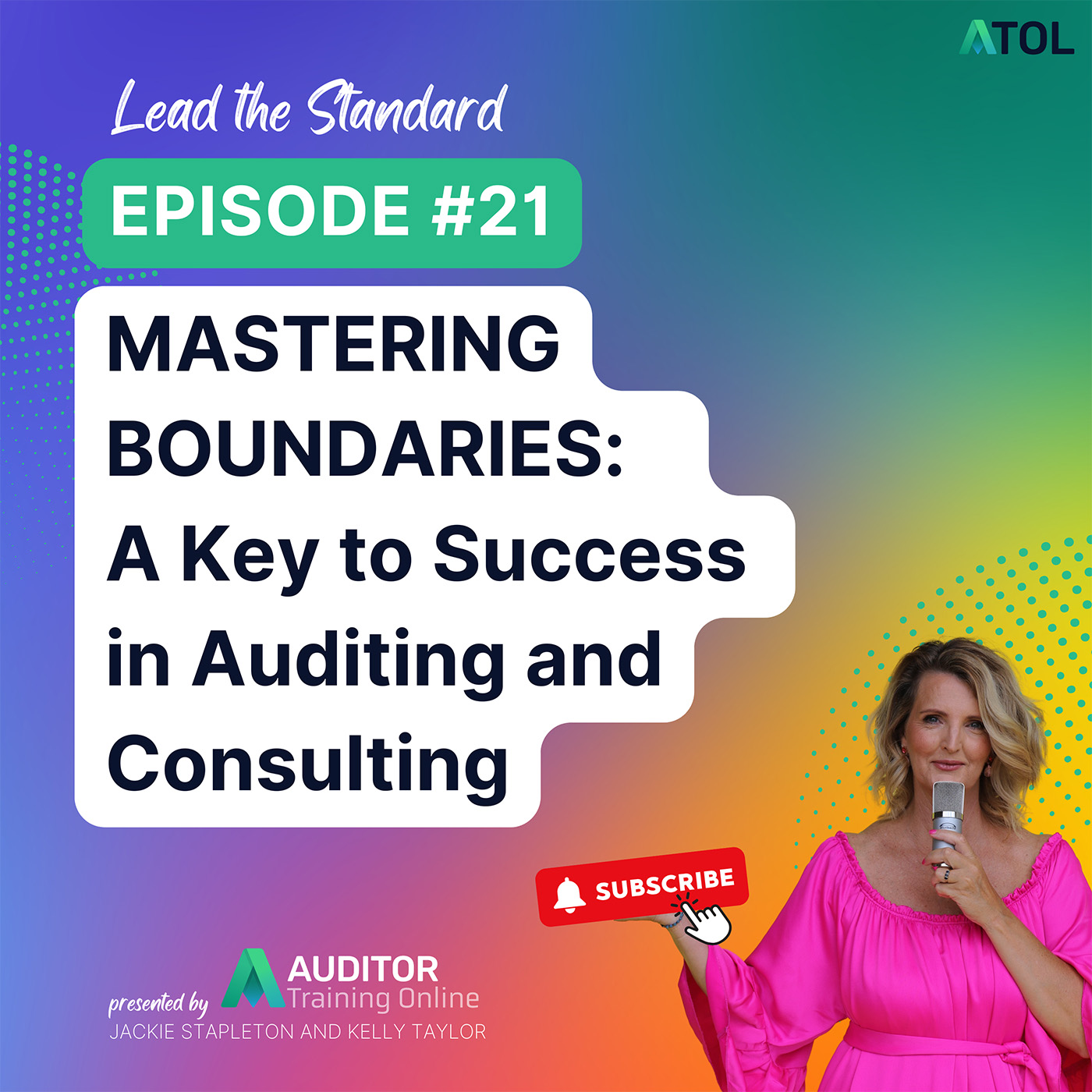Mastering Boundaries: A Key to Success in Auditing and Consulting
Auditing • 24 September 2024 12:00:00 AM • Author: Jackie Stapleton

Last year I raised a minor nonconformance for a business I have been working with for about 12 years. A nonconformance is not something they had received for at least 3 previous audits. They were in shock. I had just confirmed the nonconformance with the operations manager and then top management as they were also present at the time.
I had explained the reason why and against which criteria and it was obvious this was a gap and agreement was obtained. I then turned back to my laptop and started transferring a few notes. While I was doing this, I was overhearing their discussion about the nonconformance and what had happened to start with and some ideas on how they could prevent it.
The discussion actually got a little heated, and I started to turn around to possibly share my thoughts, but then (luckily) I stopped myself. As the certification auditor, I am not involved in office politics, arguments and in this case talking about the cause and possible corrective actions. My job had been done. I’d identified the gap, presented this with evidence and obtained their agreement.
When I first transitioned from being a salary-based internal auditor to an external auditor and consultant, I found the hardest adjustment was to remove myself from the office politics. I had to keep reminding myself that I was no longer an employee and was an external party. This meant that I had to be very aware of boundaries. So, what are the boundaries when you are an external party coming into an organization?
 Set Better Boundaries
Set Better Boundaries
In the HBR article, Set Better Boundaries, it emphasizes the importance of defining limits in professional roles to avoid overextension and preserve productivity. Setting boundaries is crucial to maintain focus on your responsibilities and avoid becoming enmeshed in internal matters, much like in my experience as an external auditor.
By establishing clear boundaries, you can avoid unnecessary involvement in internal discussions, helping to preserve your impartiality while ensuring that you deliver on your key responsibilities. This approach keeps your role effective and stress-free.

Free Resource | Aspiring Auditors Self-Assessment
Self-assessment checklist to evaluate and enhance your potential for a career in auditing by assessing key skills and identifying areas for improvement.
Boundaries in Professional Consulting and Auditing: Boundaries Model
Like I always do when I need some guidance, I turn to an ISO Standard to see if the clause requirements can transfer to support me in a solution. When I looked at ISO 9001, it dawned on me that there were several requirements that we could use to help us to establish boundaries as external parties going into an organization.
This was how the Boundaries model was created. This model uses key requirements from ISO 9001 to help external auditors establish professional boundaries and clarify roles when working with an organization. 
Each element of the model serves a purpose in defining these boundaries:
- Context: Understanding the organizational environment helps you define what’s expected from you as an external auditor or consultant, ensuring you stay within your role. Understanding the internal and external influences on the business and which areas your expertise are required will help you to stay within your boundaries and pull yourself back in when needed.
- Interested Parties: This highlights the importance of knowing the key stakeholders involved and their expectations, which helps keep interactions focused and within scope.
- Scope: Both the Context and Interested Parties output will define the scope ensuring you only focus on the areas you are responsible for, preventing overreach into other matters.
- Objectives: Clear goals help you stay aligned with the purpose of your external role, avoiding distractions from office politics.
- Evaluate: Regular evaluation of your interactions helps ensure you are maintaining the correct boundaries.
- Improvement: Continually check in that your boundaries and scope are being applied. It is normal for there to be scope creep, as long as you are aware and can professionally pull yourself back in.
This structure can help guide external auditors and consultants in maintaining boundaries and professionalism while delivering results.
Lead Auditor Management Systems
AU$1,195.00The Lead Auditor Management Systems course is designed for those aiming to conduct and lead audits across different sectors on a global scale. This comprehensive training covers skills for auditing in line with ISO Standards, suitable for work with Certification Bodies. Participants will learn through structured modules, encompassing all audit phases from initiation to reporting, complemented by the ATOL Extended Learning Program for enhanced understanding.
Next Steps for Applying Your ISO Knowledge:
- Identify Boundaries: Reflect on your current role and identify areas where you may be overstepping or underestimating boundaries. Consider how each element of the model applies to your work.
- Communicate Clearly: Start having transparent conversations with stakeholders about your role, the scope of your involvement, and what they can expect from you.
- Evaluate and Adjust: Regularly review your interactions and adjust your approach to ensure you maintain healthy boundaries while continuing to deliver value.


